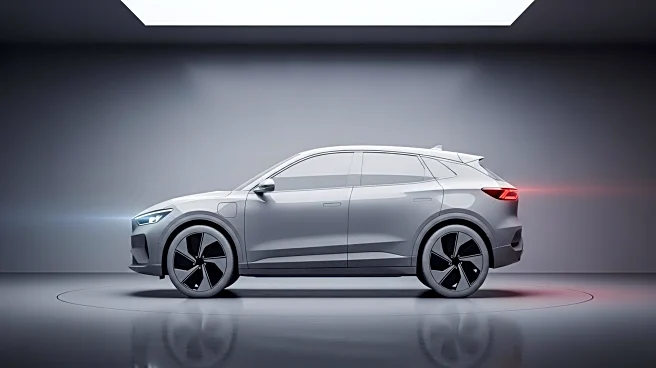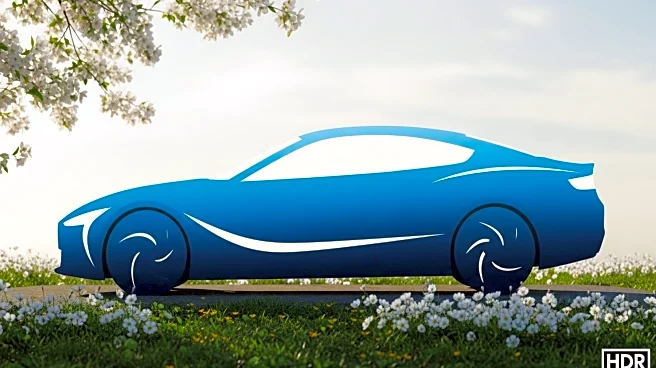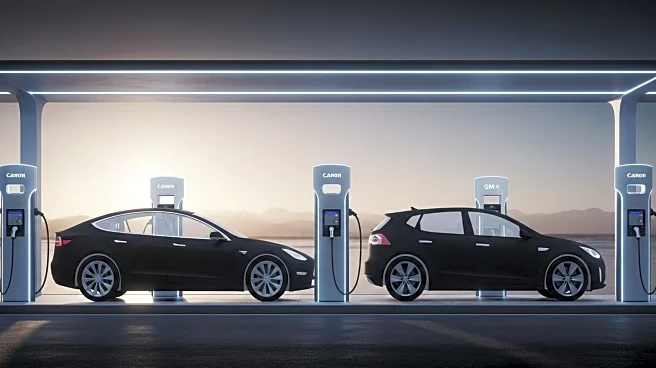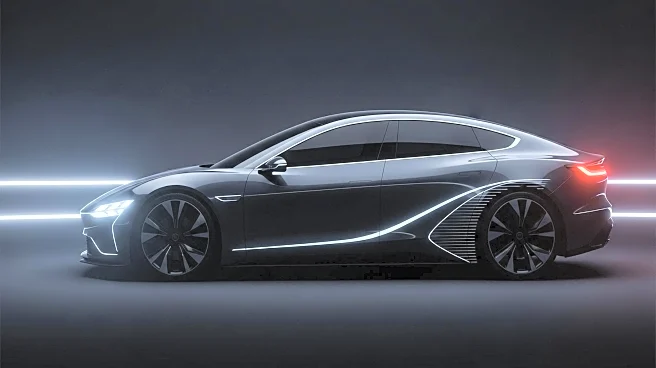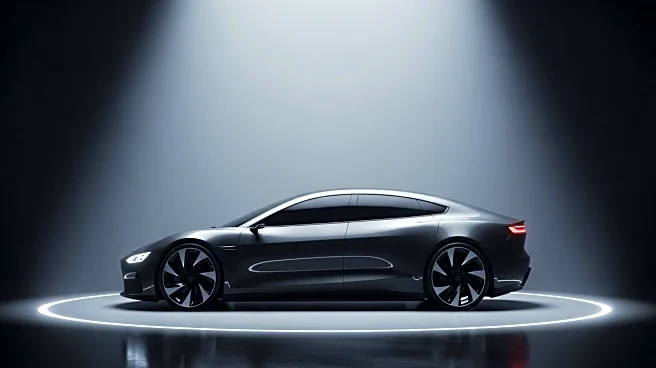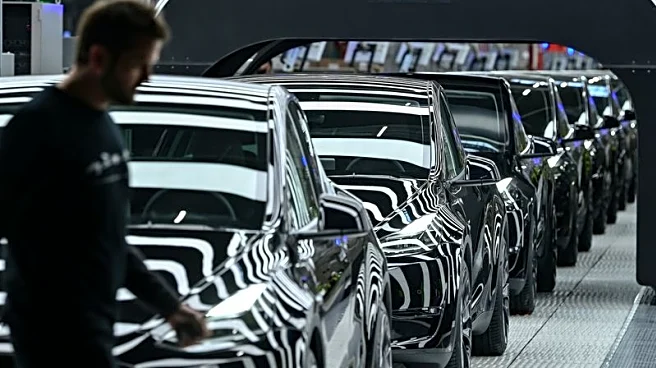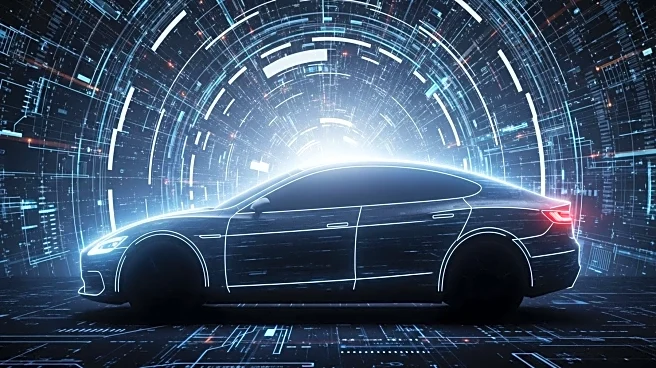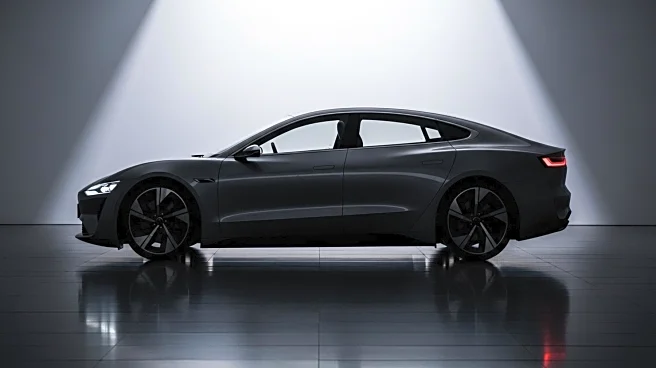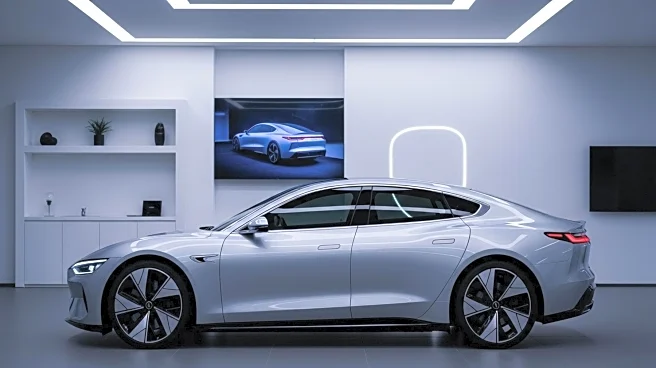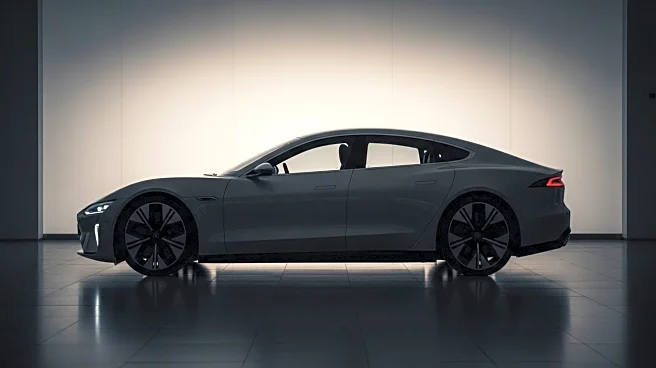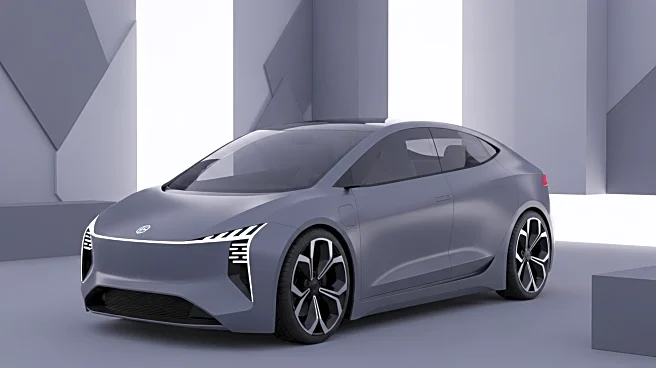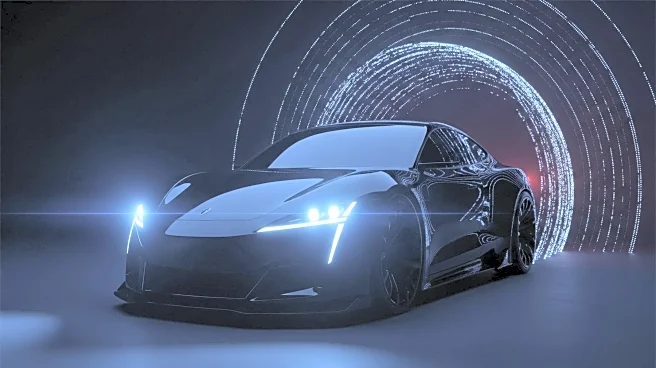What is the story about?
What's Happening?
Tesla is set to unveil a stripped-down version of its Model Y on October 7th, aiming to provide a more affordable electric vehicle option. The new model, codenamed E41, is based on the refreshed Model Y launched earlier this year but features reduced standard features to lower the price. Notable changes include the removal of the front light bar, leaving only narrow headlights, and the use of cheaper materials such as a textile interior. The vehicle will also lose the Model Y's glass roof and rear screen. This move follows Tesla's decision to cancel its planned $25,000 EV in favor of these stripped-down versions of the Model 3 and Model Y.
Why It's Important?
The introduction of a more affordable Model Y is significant as it aligns with Tesla's strategy to expand its market reach by offering lower-cost electric vehicles. This could potentially increase demand for the Model Y, although it may also cannibalize sales of the existing Model Y. By reducing the price, Tesla aims to make electric vehicles accessible to a broader audience, which could accelerate the transition to sustainable transportation. However, the success of this strategy depends on the pricing being competitive enough to attract new buyers without compromising too much on features.
What's Next?
Tesla's unveiling of the stripped-down Model Y is expected to generate interest among consumers looking for more affordable electric vehicle options. The company will likely monitor the market response closely to assess the impact on sales and production capacity. If successful, this strategy could lead to further iterations of stripped-down models across Tesla's lineup. Additionally, Tesla may need to address potential concerns from existing customers about the reduced features in the new model.
Beyond the Headlines
The decision to offer a stripped-down Model Y reflects broader trends in the automotive industry, where manufacturers are increasingly focusing on affordability to drive electric vehicle adoption. This move could influence other automakers to consider similar strategies, potentially leading to a shift in how electric vehicles are marketed and sold. The long-term implications could include changes in consumer expectations regarding vehicle features and pricing.
AI Generated Content
Do you find this article useful?
